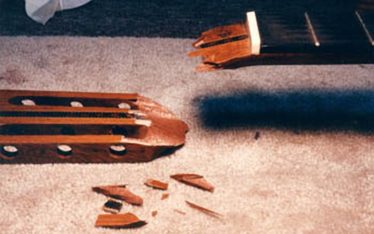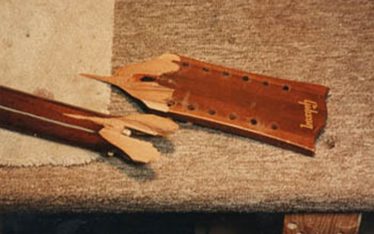Electric Guitar | Gibson ES-175
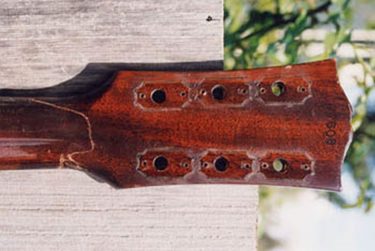
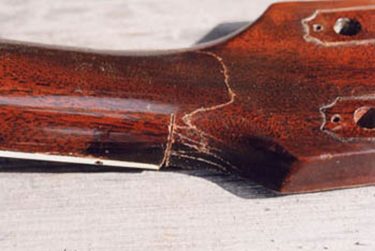
This is the ES175, one of the most popular full hollow-body guitars made by Gibson.
The part where the neck meets the head is the weakest spot on the whole guitar. When a mahogany neck is broken, many invisible cracks will often occur deep inside the wood. Once such a complicated fracture happens, because it is very difficult to inject glue into every crack, you can’t expect reliable strength from gluing in halfway.
In the 1960s and 1970s in North America, this type of damage was repaired by mounting hardwood on both sides of the truss rod, reinforcing with fiberglass, or fastening with wood screws or nuts and bolts. But most of them were usually ugly and sometimes not strong enough to hold string tension. Surprisingly, those kinds of bad repairs were done by repair persons calling themselves pros, and there seemed to be no love or caring towards the guitar or the owner. This fracture was too complicated to glue properly, so we tried to repair it with a new section.
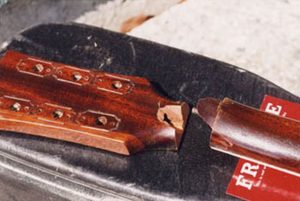
First, every part had to be precisely measured, and then a perfect template had to be made of things such as the neck angle and the shape of the head. Next, the head had to be cut off. Since I have been repairing instruments for a long time, I always feel so guilty about breaking anything, even though it is a necessary part of the repair. But to tell the truth, I had mixed feelings, almost excited, when I cut off the neck. Perhaps I’m a descendent of a samurai warrior.
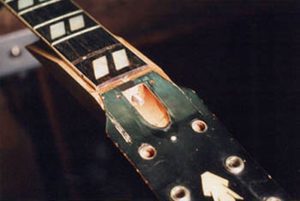
This neck is basically one piece of mahogany, but another straight grain of mahogany was added on both sides of the headstock for reinforcement and cosmetic purposes. So, I was planning to install the new section in between the wings and half of the headstock in order to retain the serial number.
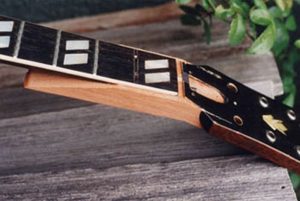
Every surface that needed gluing is angled differently. And the truss rod channel and the truss rod nut cavity have their own angle, thus making it extremely complicated to make a new section.
A dowel is usually used to prevent slippage when gluing. In this case, three dowels were used: two at the first fret slot and one at the screw hole for the truss rod cover.
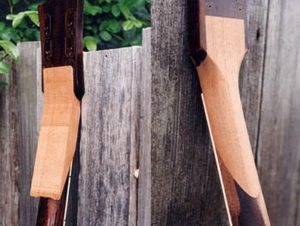
Left: New section before being shaped
Right: New section after being shaped
The new section’s color is lighter than the original neck, but it will be color-matched because of the dark finish.
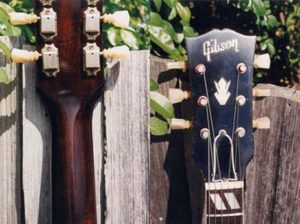
When all the parts were reassembled, even the owner couldn’t tell where the repair had been done.







